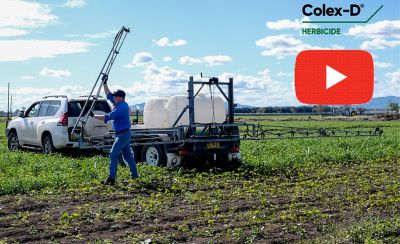“They tend to play a little bit by ear depending on markets and when it rains. It might be too late for cotton, so they want to go to sorghum or mung beans. Residual herbicides are something we don't use a lot of because it locks people into particular rotations they don't want to be locked into."
The area has also been predominantly zero-till for the past thirty years and that has also been challenging in terms of the weed spectrum.
“We have glyphosate resistance, and we are also constantly chasing weeds such as fleabane and milk thistle. Fleabane is a surface germinator and, with rain, it's germinating constantly so it's a twelve-month-a-year job chasing it."
2,4-D herbicide is used to control a range of broadleaf weeds including milk thistle and fleabane.
“It's got a huge fit there,” Mr Nelson said. “We use a little bit out very strategically over summer, but most of it is used in the winter and early spring, trying to make sure that we've got clean fallows going into summer crops."
The challenge with using 2,4-D in the summer is its proximity to sensitive crops, such as cotton, where it has the potential to cause major damage with drift and volatility.
Mr Nelson said in the past they used a lot of Statesman herbicide from Corteva Agriscience as a low volatility 2,4-D option but have now moved to Colex-D.
“Statesman was a big product used in this area,” he said. “It was a really good product with a very low odour. Colex-D is very similar. It has low odour, it's a good product and Corteva always make good formulations that mix well and work well.”
“Colex-D is every bit as good as other 2,4-D's and probably slightly better. It’s definitely a good product.”
The herbicide was widely tested at the nearby Corteva research facility, at Breeza, with farmers and agronomists able to see the Colex-D being demonstrated.
This included a spray applicator where the Colex-D formulation was applied through one boom and a generic 2,4-D formulation applied from the other.
The reduction in drift was a noticeable feature.



